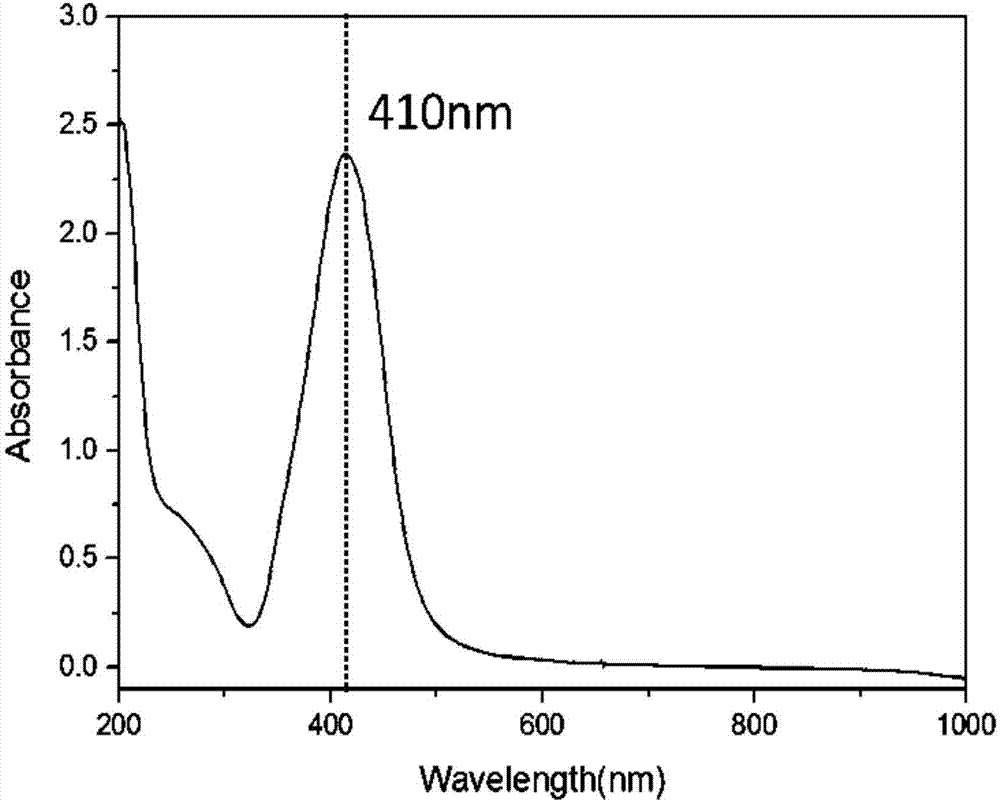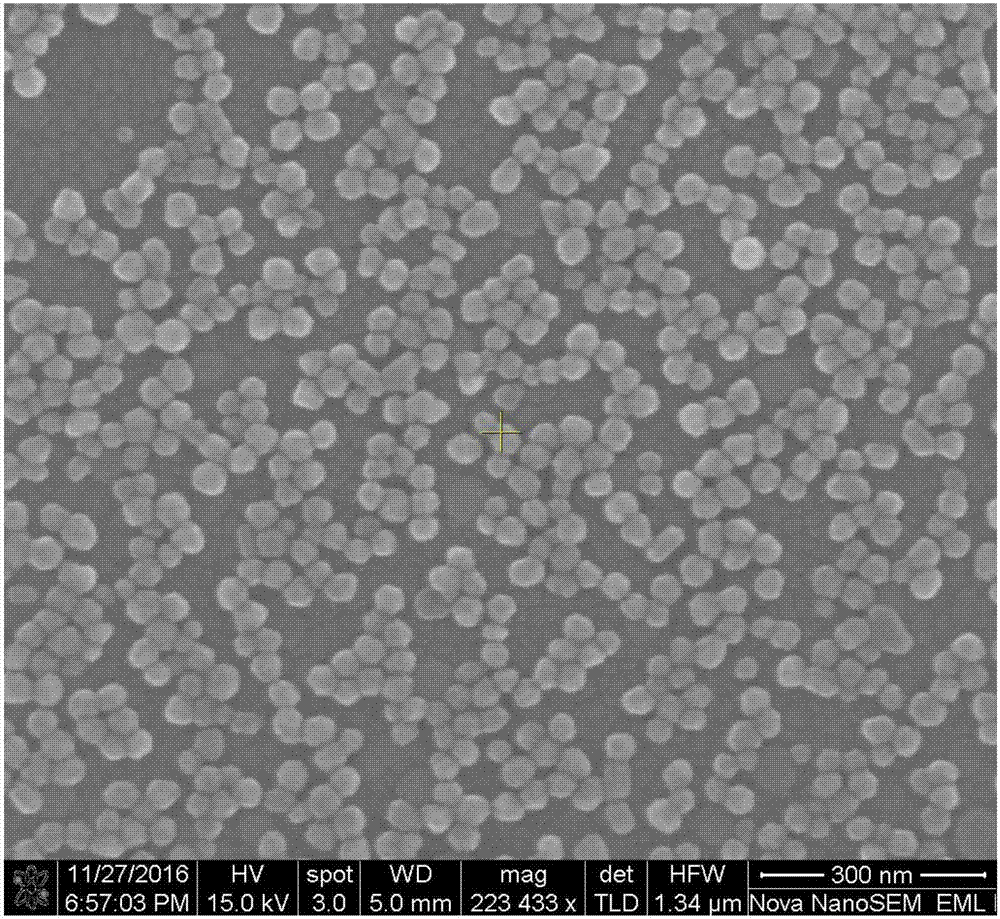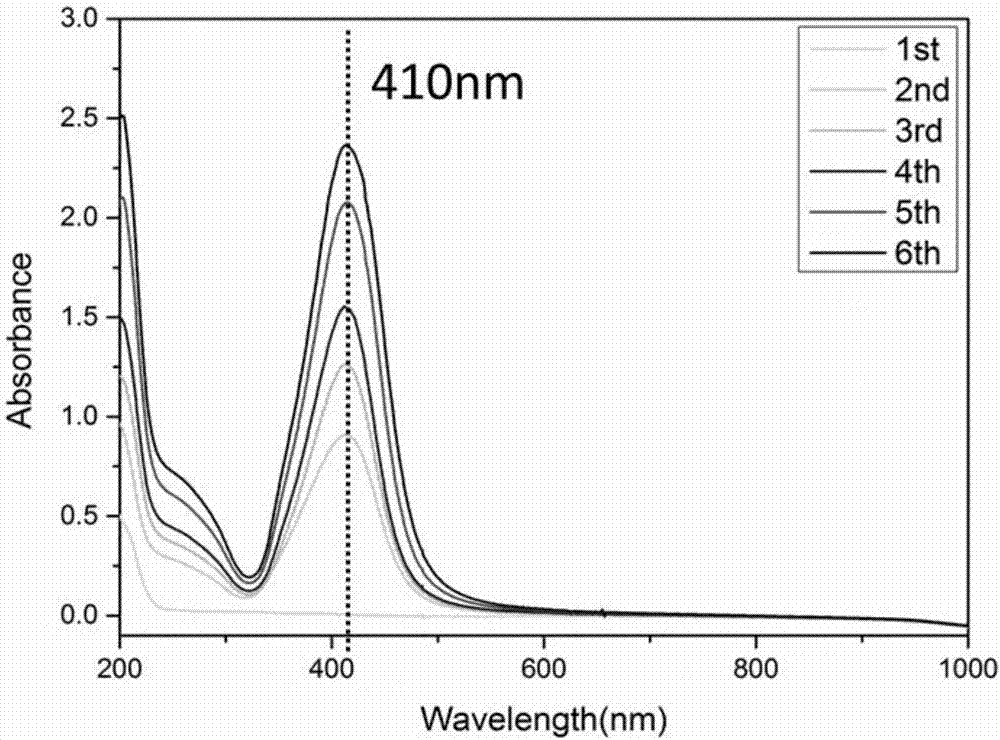Preparation method for surface-enhanced raman scattering substrate based on nano-silver particles
A technology of nano-silver particles and synthesis methods, which is applied in the directions of Raman scattering, nanotechnology for materials and surface science, nanotechnology, etc. limited and other problems, to achieve the effect of stability guarantee, good monodispersity and high utilization rate
- Summary
- Abstract
- Description
- Claims
- Application Information
AI Technical Summary
Problems solved by technology
Method used
Image
Examples
Embodiment 1
[0022] (1) Configure silver-ammonia complex solution A: Weigh 85 mg of silver nitrate and dissolve it in 50 ml of deionized water (to obtain a 0.01mol / L silver nitrate solution), then slowly add ammonia water dropwise and stir while adding, at this time the solution A brown precipitate will be produced first, and with the dripping of ammonia water, the precipitate will gradually dissolve, and stop adding ammonia water when the solution becomes clear again.
[0023] (2) Prepare glucose solution B: Weigh 9 g of glucose and dissolve in 50 ml of deionized water (to obtain a 1 mol / L glucose solution).
[0024] (3) Take 0.1ml of silver-ammonia complex solution A and add 50ml of solution B, stir and let it stand, and obtain golden yellow nano-silver particle solution C after 0.5h.
[0025] (4) In order to make the cured Raman substrate have the same thickness and shape, in this embodiment, the adhesive tape is punched and pasted on the glass slide, 0.5ml solution C is dropped in the ...
Embodiment 2
[0027] (1) configure silver ammonia complex solution A: same as Example 1
[0028] (2) Preparation of glucose solution B: Weigh 4.5 g of glucose and dissolve in 50 ml of deionized water (to obtain a 0.5 mol / L glucose solution).
[0029] (3) Add 0.01 ml of solution A to solution B every 30 minutes, and obtain golden yellow silver nanoparticle solution C 6 times in total. Each UV-visible absorption spectrum is measured as image 3 shown. After adding in batches, the absorption peaks of the nano-silver particle solution are all around 410nm, and the absorbance increases with the increase of solution A. It can be seen that the number of nano-silver particles has increased, but the diameter of the particles has not changed.
[0030] (4) Take the above solution C and add it dropwise into a beaker and completely cover the bottom of the beaker, and dry it at room temperature or high temperature until it is completely solidified into a film. The Raman active substrate thus cured was...
Embodiment 3
[0032] (1) configure silver ammonia complex solution A: same as Example 1
[0033] (2) Prepare glucose solution B: Weigh 0.9 g of glucose and dissolve in 50 ml of deionized water (to obtain a 0.1 mol / L glucose solution).
[0034] (3) Get 0.05ml silver ammonia complex solution A and add solution B, leave standstill after stirring, obtain golden yellow nano-silver particle solution C after 0.5h, its ultraviolet-visible absorption spectrum is as follows Figure 5 shown.
[0035] (4) Take the above solution C and add it dropwise into a petri dish and completely cover the bottom of the petri dish, and dry it at room temperature or high temperature until it is completely solidified into a film. The Raman active substrate thus cured was spread flat on the bottom of the petri dish.
[0036] In the above 3 embodiments:
[0037] 1. The silver nitrate can be replaced by soluble silver compounds, such as silver acetate, silver sulfate and the like.
[0038] 2. The glucose can be repla...
PUM
| Property | Measurement | Unit |
|---|---|---|
| diameter | aaaaa | aaaaa |
Abstract
Description
Claims
Application Information
 Login to View More
Login to View More - R&D
- Intellectual Property
- Life Sciences
- Materials
- Tech Scout
- Unparalleled Data Quality
- Higher Quality Content
- 60% Fewer Hallucinations
Browse by: Latest US Patents, China's latest patents, Technical Efficacy Thesaurus, Application Domain, Technology Topic, Popular Technical Reports.
© 2025 PatSnap. All rights reserved.Legal|Privacy policy|Modern Slavery Act Transparency Statement|Sitemap|About US| Contact US: help@patsnap.com



